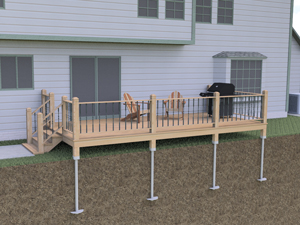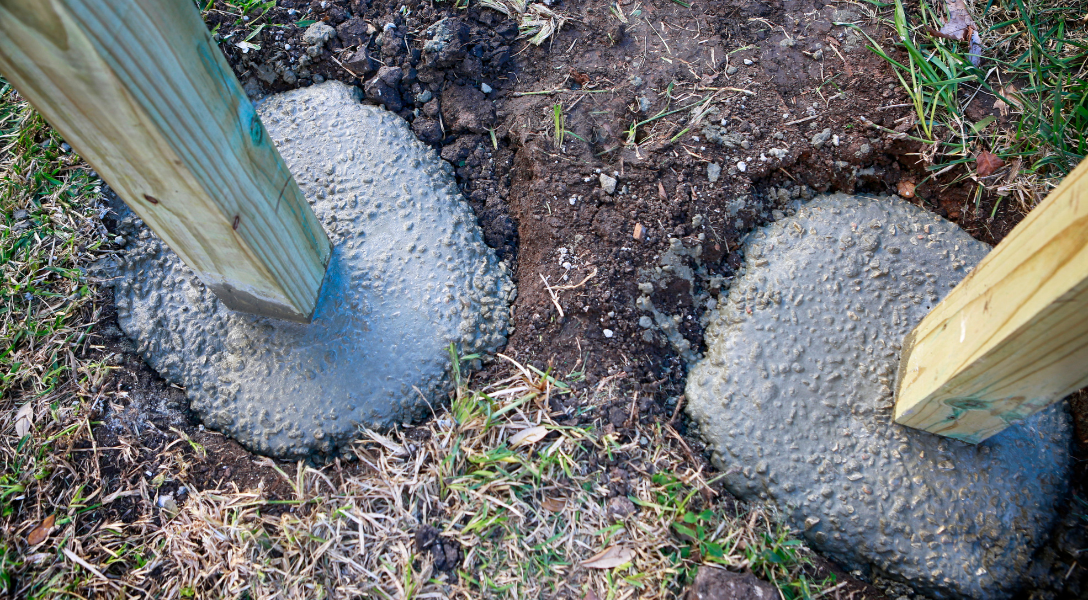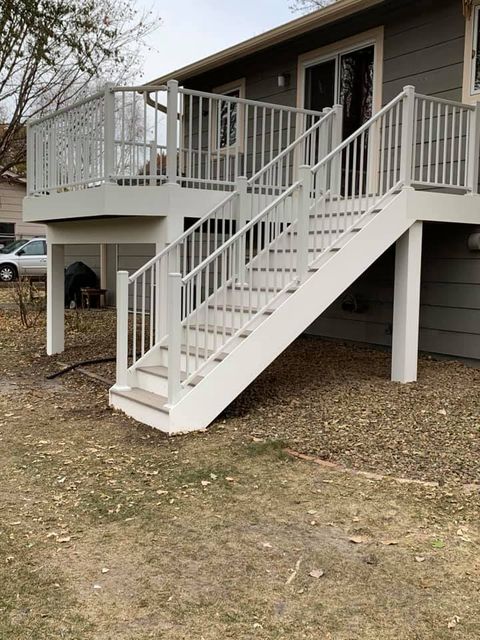Deck Footings 101: Navigating the Fundamentals for a Steady and Sturdy Deck
Deck Footings 101: Navigating the Fundamentals for a Steady and Sturdy Deck
Blog Article
Make Certain Stability and Long Life With Correctly Mounted Deck Footings
Deck grounds might not be the most extravagant facet of deck building, but they play an important duty in making certain stability and long life. In this conversation, we will check out the significance of proper deck footings, variables to take into consideration throughout setup, different kinds of footings available, detailed setup guide, and upkeep ideas for making sure lasting grounds.

Importance of Appropriate Deck Footings
Why are effectively installed deck footings vital for the security and long life of your deck? The answer depends on the essential duty that deck footings play in supporting the weight of the entire structure. Deck grounds are the structure on which the deck rests, transferring the tons from the deck to the ground. When footings are not appropriately mounted, it can cause a series of concerns that endanger the security and long life of the deck.
First of all, appropriately mounted deck grounds disperse the weight of the deck uniformly, avoiding any uneven settling or sinking. This is particularly important in areas with unstable dirt, as it aids to alleviate the threat of the deck breaking down or shifting. Additionally, well-installed grounds make certain that the deck continues to be level, preventing any kind of architectural damage that can occur when a deck becomes uneven.
Secondly, correctly installed grounds supply a solid support for the deck, stopping excessive activity and persuade. This helps to keep the structural integrity of the deck, lowering the danger of injuries or accidents. It additionally reduces the wear and tear on the deck, permitting it to endure the components and routine use for a longer amount of time.
Elements to Take Into Consideration for Deck Footing Installment
When installing deck footings, there are numerous vital variables to think about for appropriate installation. Different dirt kinds have different load-bearing capacities, so it is essential to conduct a dirt examination to guarantee the footings can sustain the weight of the deck and its passengers. By taking right into account these elements, you can ensure the correct setup of deck footings and enjoy a secure and resilient deck.
Kinds of Deck Grounds to Pick From
There are numerous various kinds of deck grounds readily available for you to select from. Each type has its very own advantages and disadvantages, so it's vital to consider your certain needs and the problems of your deck before deciding.
One usual kind of deck ground is the concrete ground. This includes digging holes in the ground and pouring concrete into them to create a strong structure. Concrete grounds are long lasting and supply outstanding stability, making them ideal for decks in locations with difficult soil problems or high wind tons.
One more choice is the helical pier footing, which is composed of a steel shaft with helical plates that are screwed right into the ground. These footings fast to mount and can be made use of in different soil kinds, including sandy or clay soils. They are additionally flexible, allowing for very easy progressing of the deck.
Sonotube footings are an additional prominent choice. These grounds are produced by placing a cardboard tube in an opening and filling it with concrete. Sonotube footings are reasonably easy to mount and supply sufficient security for smaller sized decks or in areas with much less demanding dirt conditions.

When selecting the kind of deck ground, it's vital to consider elements such as soil conditions, deck size and weight, regional building codes, and personal preferences. By picking the appropriate ground kind, you can make certain the security and durability of your deck.
Step-by-Step Overview for Setting Up Deck Footings

Identify the area: Begin by marking the specific position of each footing making use of stakes and string (Deck Footings). Consider any kind of local building ordinance or guidelines regarding problem ranges
Dig the holes: Utilize a blog post hole digger or Visit Your URL an auger to dig the holes for the footings. Normally, a deepness of at the very least 36 inches is advised for security.
Degree the holes: Ensure that the bottoms of the holes are level (Deck Footings). This can be accomplished by utilizing a degree or a straight board throughout the top of the openings
Include crushed rock: Area a layer of crushed rock at the base of each opening to boost drainage and prevent the footing from penetrating the soil over time.
Insert the footing forms: Insert the footing forms into the openings, guaranteeing they are focused and degree. Usage risks to protect them in position.
Mix and pour concrete: Comply with the directions on the concrete mix bag to prepare the concrete. Pour the concrete into the footing forms, filling them entirely.
Smooth the surface area: Make use of a trowel to smooth the surface area of the concrete and get rid of any kind of air pockets. Permit the concrete to heal according to the supplier's guidelines.
Upkeep Tips for Resilient Deck Footings
Proper maintenance is essential for guaranteeing the longevity and stability of deck footings. By on a my link regular basis checking and keeping your deck grounds, you can stop damage and potential safety hazards. One vital facet of upkeep is to on a regular basis inspect for any signs of damage, such as splits or motion in the footings. If you notice any kind of problems, it is essential to address them without delay to prevent further damages.
Normal cleaning is likewise important for keeping deck footings. Vegetation, dirt, and particles can gather around the footings, which can cause moisture build-up and decay. Cleaning up the grounds routinely, utilizing a brush or a stress washer, can aid prevent these issues and prolong the life-span of your deck.
In addition to cleansing, it is essential to keep the area around the footings free from any blockages. Stay clear of piling items against the footings or enabling plants to grow too near to them. These obstructions can trap dampness and cause the grounds to wear away over time.
Lastly, regular resealing of the footings is recommended to safeguard them from wetness and other environmental aspects. Using a water-proof sealer can assist stop water damages and prolong the life expectancy of the grounds.
Final Thought
Finally, appropriate setup of deck footings is important for making sure stability and durability of your deck. Elements such as soil type, lots ability, and regional building ordinance need to be considered when choosing the appropriate kind of deck footings. Following a step-by-step overview for installment and routine maintenance will certainly aid to make sure the learn this here now footings remain durable and durable.
In this discussion, we will certainly discover the significance of proper deck grounds, aspects to think about during installment, different types of grounds offered, detailed setup guide, and upkeep ideas for ensuring durable footings. Deck footings are the structure on which the deck rests, moving the load from the deck to the ground.One usual kind of deck footing is the concrete ground. Insert the ground forms: Put the footing creates into the holes, guaranteeing they are focused and level.In conclusion, appropriate installation of deck footings is crucial for making sure stability and durability of your deck.
Report this page